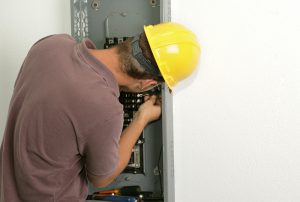No one ever wants to be slapped with an unexpected air conditioning repair just before the hot summer season arrives, especially seeing as we are still mired in a struggling economy. These home owner tips may help you avoid some of the most common spring air conditioning problems, and prevent the need for panicked calls to your HVAC technician.
Tripped Breaker
First, check to see if the circuit breaker that controls your air conditioner has tripped. If it has, reset it, and if it seems to function properly, you don’t need to call us, as it may have been a power surge or other common issue that caused the breaker to trip. If the breaker does not reset, or continues to trip, call us. It may be something simple, such as a bad breaker, a loose wire or a bad capacitor. Ignoring a breaker that trips often could turn a simple problem into a far more expensive repair.
Dirty Filters
Systems that use a one-inch disposable filter require that filter to be changed monthly. It’s easy to forget to change it since it isn’t right in front of you, but every year our technicians go on service calls where a non-cooling air conditioner is simply unable to circulate air because the filter is so dirty. Even worse, a dirty filter can lead to frozen indoor coils, which may lead to more extensive repairs (see a pattern developing here?), so I strongly suggest heeding this home owner tip.
Refrigerant Leaks
Air conditioners are sealed units, so there should never be any leaks of refrigerant. Leaking refrigerant leads to bad juju in your air conditioning system, as the unit’s efficiency drops and your energy costs rise. The problems begin to compound with an air conditioner that does not cool, and soon you’re dealing with a frozen coil or a damaged compressor. Plus, you are contributing to damage in the ozone layer, as refrigerants are greenhouse gases. We use several tools to learn why a system is leaking refrigerant, and often it is simply a bad Schrader valve or a weakened connection between a fitting and tubing.
Switch Turned Off
This may sound like a no-brainer, but make sure your heating and air conditioning unit is turned on before you call. Some systems have a wall switch for safety and convenience that could be confused for a light switch. One simple home owner tip is to check the switch before calling the experts.
Thermostat Problems
Some thermostats require switching between heating and cooling modes, so if the switch is on heat, your air conditioner will not start and vice versa. Quality digital thermostats rarely fail, although cheap ones from big-box outlets might, with a voltage spike or broken switch within the thermostat causing them to malfunction.
Clogged Drain Line
Air conditioners remove moisture from the air of your home, and obviously that moisture has to go somewhere. Normally, there is a drain hose that enables this moisture to drain into your plumbing system, and there should be a drain pan as a backup to the hose. Because the hoses contain moisture, algae can grow in the tubes and clog the lines, leading to water damage. Our spring air conditioning tune-up includes cleaning of these hoses. Here’s another home owner tip—perform a spring air conditioning tune-up annually to avoid these leaks.
Faulty Contactor
Air conditioning systems contain contactors, which is simply an electromechanical switch in your air conditioner. The silver coating on a contactor can wear off, causing the mechanism to stick. This causes the outside unit—and your electric meter—to run continuously. In addition, ants are often attracted to the electricity and end up getting squashed between the contactors, blocking them from closing, so the unit outside will not run at all. Inspection of contactors is also included in our spring tune-up.
Dirty Evaporator Coil
Liquid refrigerant is sprayed onto the evaporator coil to evaporate and draw heat from the air being blown across the coil, which is located inside your home. The coil sometimes needs cleaning as dust and particle build-up restrict the heat transfer capabilities and airflow is reduced down the duct system.
Dirty Condenser Coil
Your air conditioner compressor pulls hot refrigerant gas from the evaporator and pumps it through the condenser coil, located outside your home, where it condenses into a liquid as the condensing unit fan pulls air across the coil. Like the evaporator coil, the dirty condenser coil is inefficient, increases electricity usage and reduces cooling capacity. Again, my best home owner tip is to have a spring tune-up performed as we wash, clean and if needed, comb the condenser coil during that service.
Duct Leaks
The duct system adds and removes heat or air conditioning to your home; if the ducts outside the living space leak, you are heating or cooling the outside (we won’t tell your kids, so you can continue to use that line on them when they hold doors open). If the ducts that bring air from the outside in are leaking, unfiltered air is being delivered into your living space. Repairing ductwork leaks is not expensive, but ductwork leaks can be quite costly.
These are just a few home owner tips to help you avoid surprise air conditioning repair bills, and help improve your home air quality, making your home cleaner and healthier. For more information about home air quality, visit our website and connect with us on Facebook, Twitter, YouTube and LinkedIn.
Menu
Matt’s Minute | Home Owner Tips for Common Spring AC Problems
Proudly providing Air Conditioning & Heating service and replacements to Irving, Dallas, Fort Worth, Coppell, Flower Mound, Plano, Frisco, Bedford, Euless, Colleyville, Hurst, Arlington, Addison, Carrollton, Farmers Branch, Grand Prairie, Grapevine,Highland Park, University Park, Garland, Keller, Lewisville, Richardson, North Richland Hills, Southlake, The Colony, and other surrounding cities in Dallas County, Tarrant County, Collin County, and Denton County
Quick Links
Location
Spencer Air Conditioning & Heating
License: TACLB27949E
Phone: 972-446-2665 / 972-316-9405
Fax: 972.253.5326
Email Us





